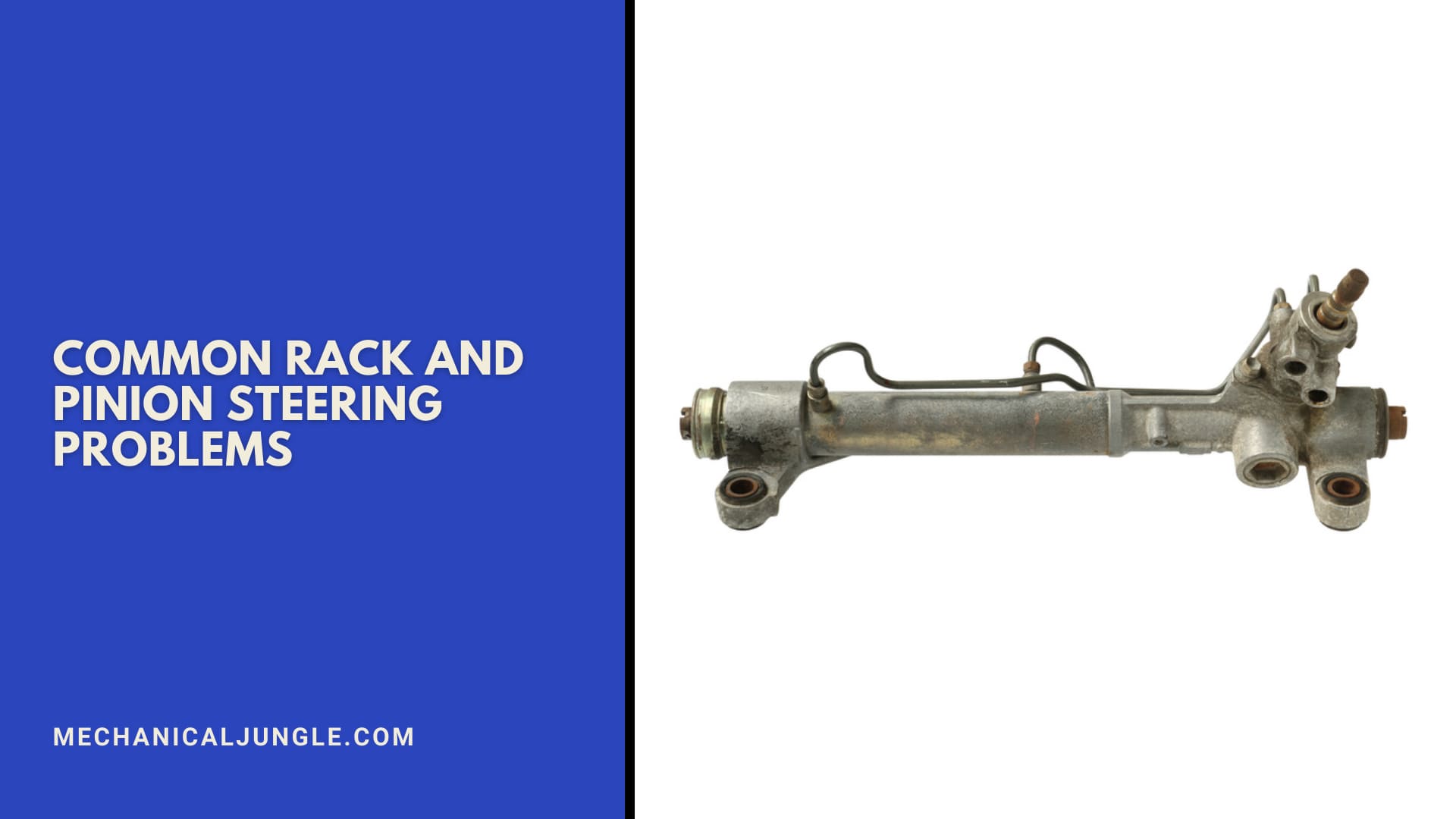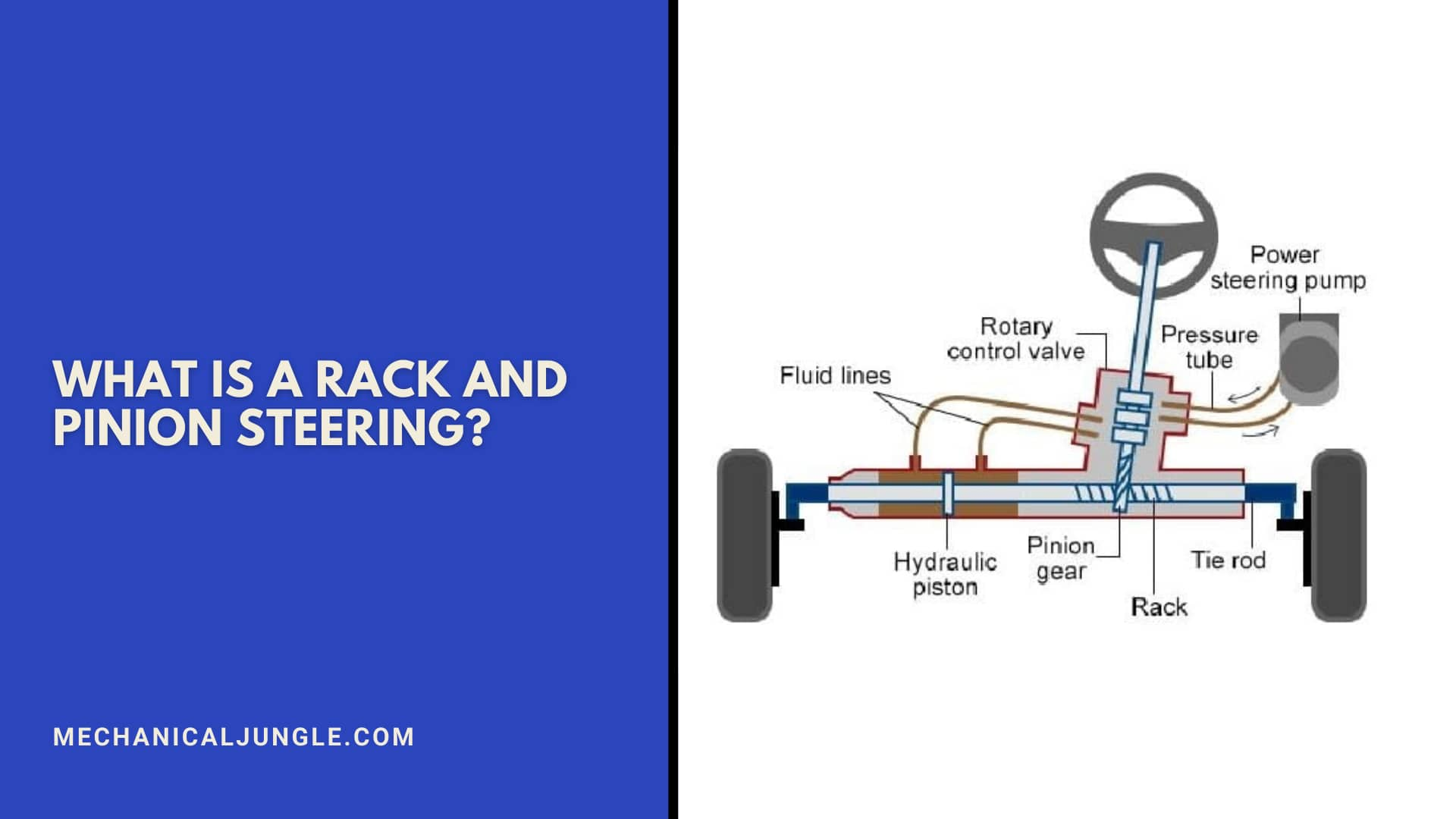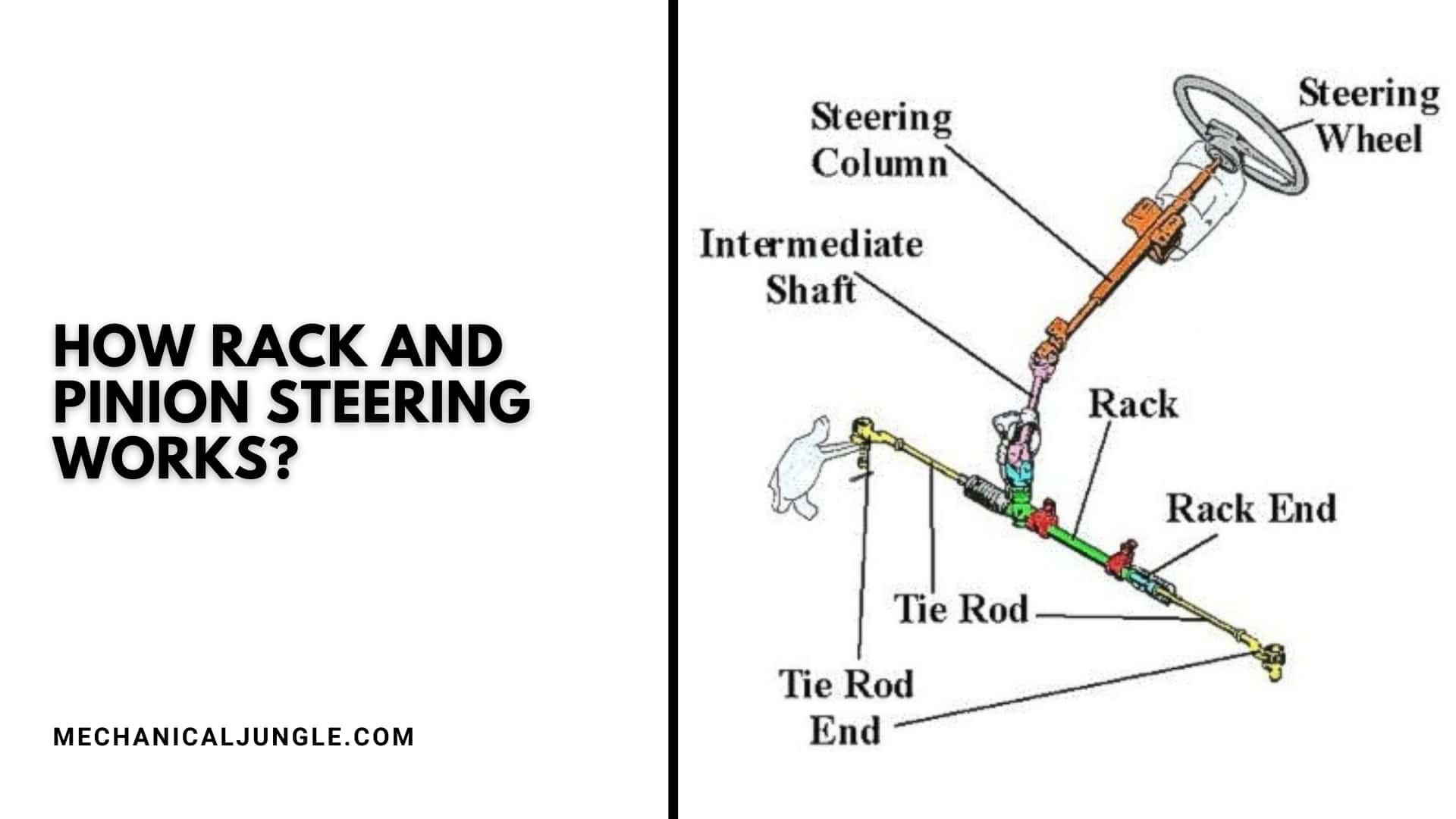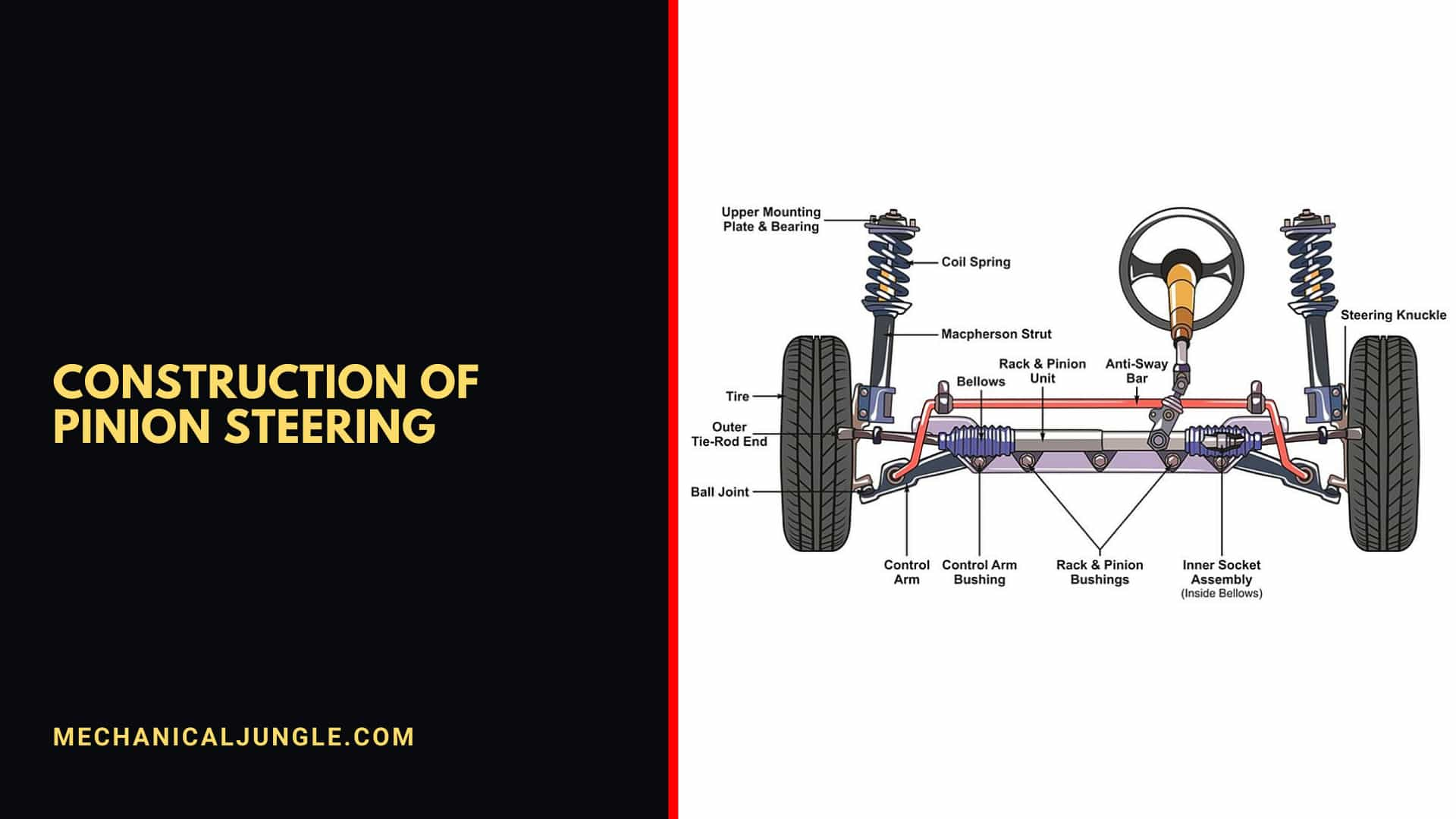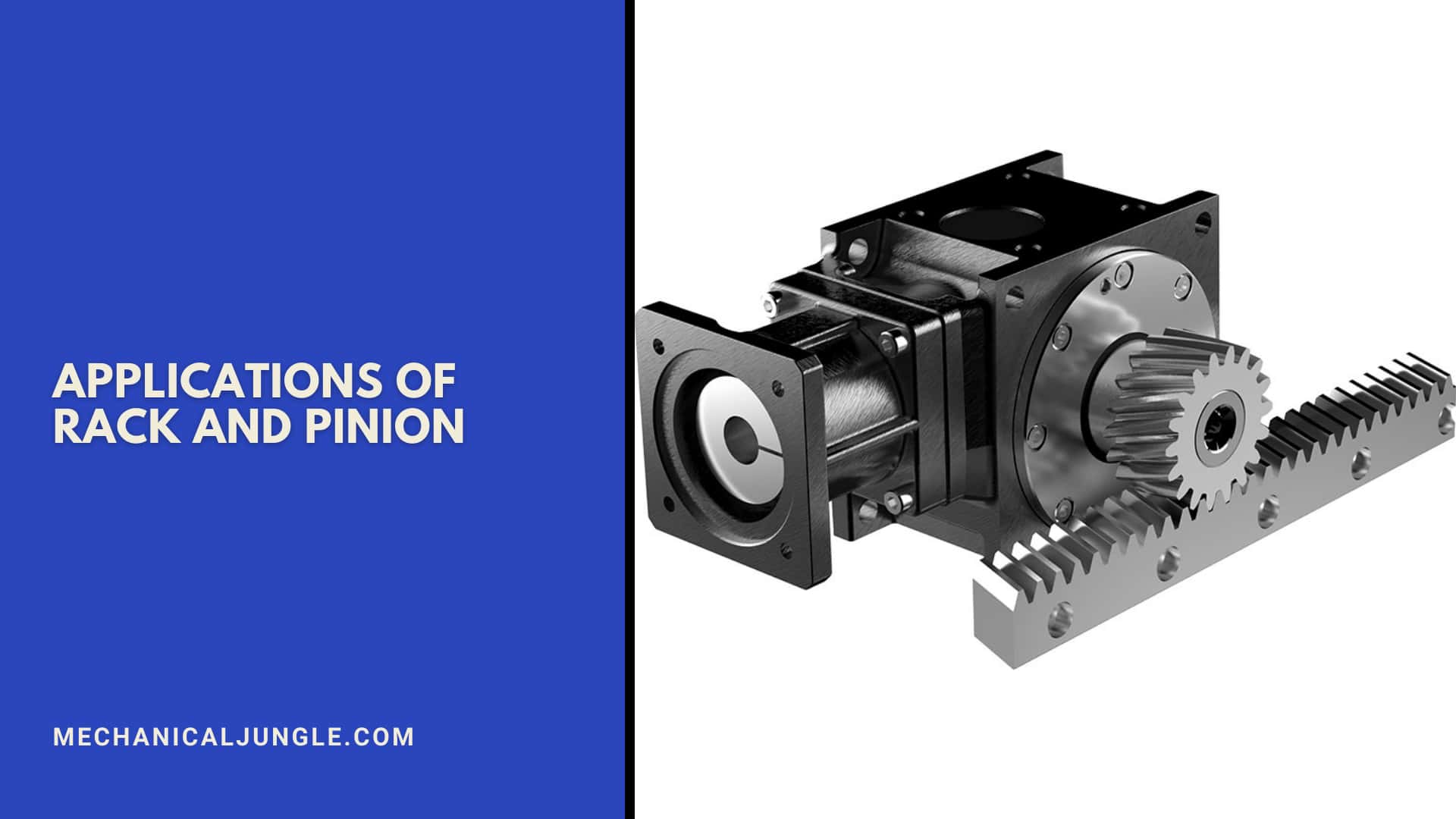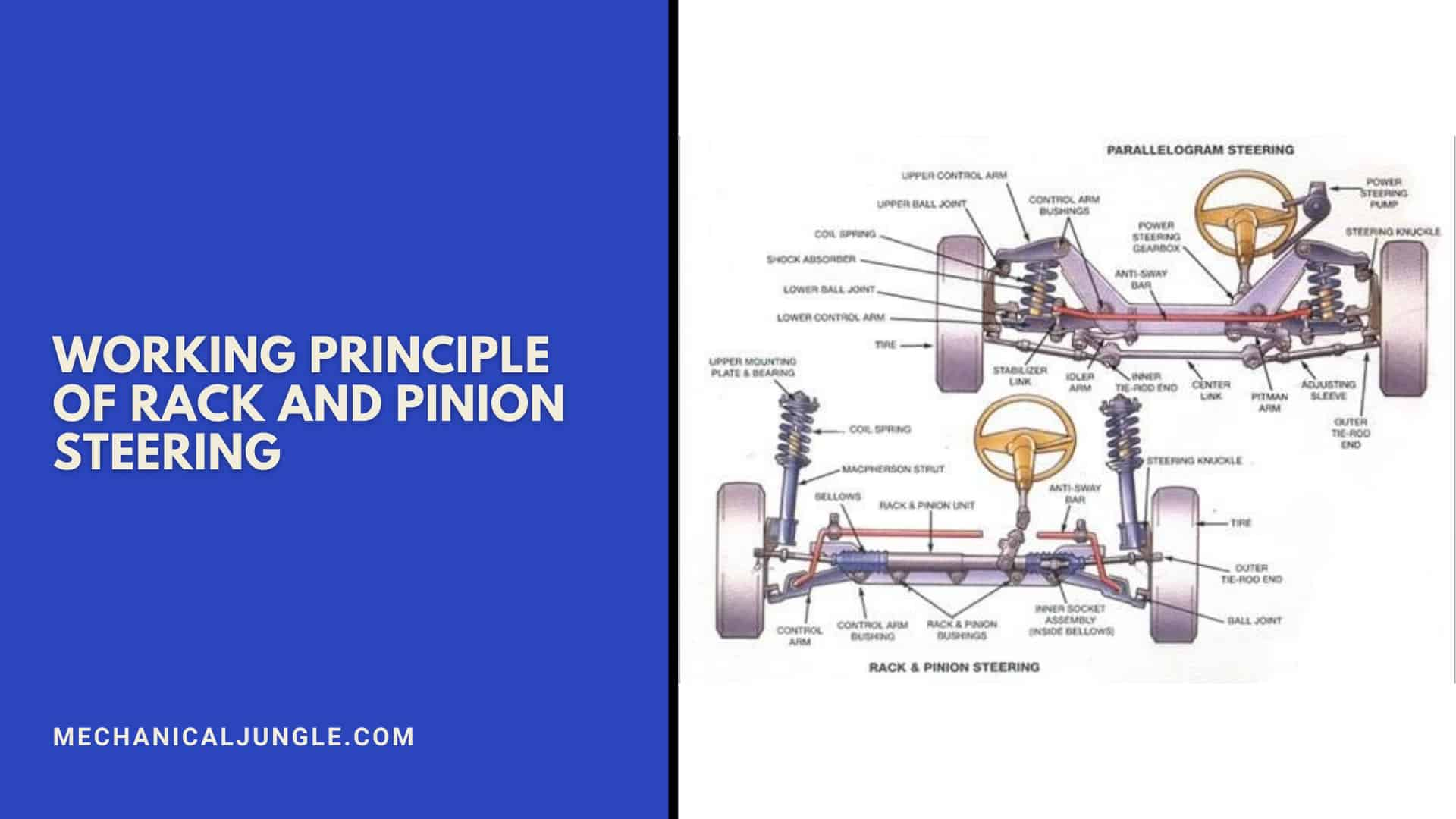Important Point
What Is a Rack and Pinion Steering?
Rack and pinion steering is fast becoming the most common type of steering in cars, small trucks. It’s actually a pretty straightforward mechanism.
It’s actually a pretty straightforward mechanism. The rack and pinion set is enclosed in a metals tube, with each end of the racks protruding from the tube.
The rod, often referred to when discussing what is rack and pinion, called a tie rod is attached to each end of the rack.
Rack & pinion steering is a type of steering with a pair of gears that convert rotary motion into linear motion.
These systems consist of a circular gear called a pinion with teeth attached to a linear gear shaft called a rack.
The rotary motions applied to the pinions cause it to turn while moving the rack sideways. The mechanism is simple and driver-friendly.
It is the most effective and, therefore; A widely used steering system by car manufacturers around the world.
It is universally accepted that this is the best system to use. The mechanisms consist of pinions at the end of the steering columns that coincide with the rack. The pinion is attached to the steering column at its end.
It is mated to a rack that moves either to the left or to the right depending on the speed of the pinion.
In this steering mechanism, the rack serves as the center section of the three-piece rod. The rack has balls joints at each end that allow for up and down movement of the wheels.
Plus, there’s a spring-loaded pad under the rack that minimizes backlash between gears. The rack is attached to a pinion mounted on the steering shaft.
In addition, ball joints further connect to the stub axle via ‘tie rods.’ rotary motion of the steering wheel directly conveys the wheels through the sideways motion of the rack.
In the case of most steering gears, on a right-hand drive car, the far side wheel is driven directly, while the rear wheel is driven through a ‘linkage.’
In the case of light sports cars, this type of steering gear has much less gear reduction.
Also, Read: What Are the Warning Signs of Loose Steering? | Symptoms of a Bad or Failing Steering Rack/Gearbox
How Rack and Pinion Steering Works?
The power steering rack is always attached to either side of the steering wheel arms. The moving rack turns the wheel one way or another.
Movement is usually part of a simple mechanism. The rotation of the steering shaft, either by hand or by motor, converts rotary motions into linear motion.
The load of the racks is usually minimal. Rack and pinion power steering use a gear-set to converts the circular motion of the steering wheels into the linear motions required to turn the wheels.
It also offers gear reduction, so the wheels are easier to turn. It works by enclosing a rack & pinions gear-set in a metal tube, with each end of the rack protruding from the tube and attached to an axial rod.
The pinion gears are attached to the steering shafts so that when the steering wheels are turned, the gear continues to rotate while rotating the rack.
The axial rods at each end of the rack connect to the end of the tie rod, which is attached to the axle.
Rack and Pinion Steering Ratios
Most cars require three to four complete turns of the steering wheel to go from lock to lock from right to far left.
The steering ratio shows you how far the steering wheel has to be turned to make the wheels turn a certain amount.
Higher ratios mean you need to turn the steering wheels more to get the wheels to rotate a certain amount, and a lower ratio gives the steering a faster response. Some cars use variable-ratio steering.
This rack and pinion steering system uses differents numbers of teeth per cm of tooth’s pitches in the centers than at the ends.
Results are that the steering is more sensitive when it is turned towards the lock than when it is closer to its central positions, making the car more maneuverable.
There are two main types of rack & pinion steering systems:
End Take Off: Tie rods are attached to the end of the steering rack via internal axial rods.
Center Take Off: Bolts attach the tie rods to the center of the steering rack.
Also, Read: What Is Fluid? | Types of Fluids | Compressible Fluid | Type of Fluid Flow
Useful Article For You
- What Is Car Interior Used?
- What Is Transmission
- What Is a Pulley
- What Is an Inverter
- What Is Fluid
- What Is a Flywheel
- What Is a Head Gasket
- What Is Composite
- What Is an Alternator
- What Is a Cvt Transmission
- What Is Earthing
- What Is a Transformer
- What Is a Lathe
- What Is a Spark Plug
- What Is a Strut
- What Is a Boiler
- What Is a Torque Converter
- What Is Milling
- What Is a Map Sensor
- What Is a Radiator
- What Is Tlc in a Car
- What Is a Jig
- What Is a Bolt
- What Is a Screw
- What Is Thermal Pollution
- What Is Annealing
- What Is a Turret
- What Is a Turbine
- What Is a Wheel
- What Is Egr
- What Is a Plane
- What Is a Generator
- What Is a Crankshaft
- What Is a Solar Panel
- What Is a Motor Mount
- What Is a Fastener
- What Is a Spanner
- What Is a Spring
- What Is the Best Head Gasket Sealer
- What Is Motor Vehicle Services
- What Is Gear Oil Used For
- What Is a Brushed Motor
- What Is a Shaft
- What Is an Engine
- What Is a Spread Footing
- What Is a Pitched Roof
- What Is Turbo
- What Is a Condenser
- What Is a Hacksaw
- What Is Flux Core Welding
- What Is a Broach
- What Is a Master Cylinder
- What Is a Gearbox
Construction of Pinion Steering:
In these types of steering gearboxes, the pinion is mounted at the end of the steering shaft.
The pinion is attached to a rack that is provided with a ball joint at each end of it to allow the wheel to rise and fall. The rotary motion of the steering wheel is transmitted to the pinion.
The circular motions of the pinion are converted into a linear rack movement, which is then transmitted to the stub axle to tie the rod through the ball joint.
This type of steering gearbox provides a sufficiently low gear reduction for cars and is also suitable for heavy motor vehicles with power-assisted. It takes up very little space & is less connected.
Also, Read: Functions of Car Wheel | Parts of Car Wheel
Applications of Rack and Pinion:
While most consumer is familiar with rack & pinion systems for steering cars and small trucks, rack, and pinion combinations have many other applications.
Not only are rack & pinion systems used to help trains climb steep gradients, but they also provide better brake control, especially in icy and icy conditions.
Stairlift.com states that rack and pinion systems are standard components in most stairlifts. Rack and pinion mechanisms often operate using hydraulic or electrical energy.
In the 1970s, Arthur Ernest Bishop invented the variable rack. Along with a standard pinion, their variable rack was used to improve the handling of the vehicle.
Also, Read: What Is a Coupling? | How Does a Shaft Coupling Work? | Types of Shaft Coupling
Power Rack and Pinion:
The Hemmings Motor News notes that cars with power steering have a slightly different rack and pinion design.
On the power side, the racks are two steel tubes that act as pressure and return lines, turning left and right.
A cylinder containing pistons with two fluid ports connects to the power rack. The high-pressure fluid moves the piston, which then moves the rack. Electric systems use an electric pump.
Working Principle of Rack and Pinion Steering:
The rack and pinion steering gear box consists of a pinion, which is attached to the steering column. It runs with a rack in the pinion lattice that is attached to the steering tie rods.
Both pinion and rack teeth are helical gears. Helical gearing gives an easy and quiet operation to the driver.
Rotating the steering wheel, when understanding how does rack and pinion steering work, rotates the pinion and moves the rack from side to side.
Ball joints at the end of the rack locate the tie-rods and allow for movement in the steering and suspension.
The mechanical advantage is obtained from the reduction ratio. The value of this ratio depends on the size of the pinion.
A smaller pinion gives lighter steering but requires several turns of the steering wheel to get from lock to lock.
The larger pinion means the number of turns of the steering column is reduced, but the steering is heavier to turn.
Common Rack and Pinion Steering Problems:
Since steering is essential to controlling your car, and it is important to diagnose and repair any steering-related problems as soon as possible. Typical steering problems include:
1. Very Tight Steering Wheel
If your steering wheels are becoming more difficult to turn, this is a sign that there may be a problem with your steering rack or a lack of pressure from the power steering unit.
The solution may be as simples as adding more power steering fluid, but it’s best to have it checked.
If the steering wheel feels tights or is harder to turn than usuals, it is usually because the rack or transmission is producing more heat or the power steering is reducing hydraulic pressure.
Either way, this is a problem that cannot be fixed and should be checked out by a mechanic as soon as possible.
Sometimes it’s as simple as adding more powers steering fluids or making minor adjustments that can solve these problems & extend the life of your steering rack.
2. Leaking Power Steering Fluid
The power steering fluid level is simply low, and the steering becomes tight when a leak occurs.
This is not a majors problem, however, as the consequences of leaving it on for too long include overheating the steering gearbox and steering rack or breaking gears.
However, since the steering box is hydraulically operated, the fluid level will not drop unless there is a leak somewhere in the system.
Once you start leaking powers steering fluid, it means that a loose-fitting, broken seal or other mechanical problems are causing the leak that needs to be fixed as soon as possibles.
Otherwise, racks or gearboxes will develop excessive heat & possibly break gears & other components, resulting in an accident.
It is also usually red or pinks in color & drips from the rear of your engine.
If you discover these types of fluid under your car, contacts a mechanic as soon as possible to have the leak checked and repaired before it causes additional damage to the leak.
3. Grinding Noise While Steering
A grinding noise from your steering gearboxes comes from metal-on-metal contacts, suggesting a lack of lubrication.
You will be able to hear it clearly when you turn left or right. The extra heat creates metal-to-metal contact and therefore creates a loud grinding sound when you turn left or right.
You can actually notice this sound if you turn and bump at the same time, such as driving in a driveway. Ask your mechanics to take a look at the problems, as your steering gearboxes may need to be replaced.
4. Burning Oil Smell
Power steering fluids smell like burning oil, so if you smell it while driving, it is a sign that the steers gearbox is too hot. It is best to stop your car as soon as possible and look at the problem.
Since the power steering fluids themselves smells like burnt oil, a strong smell of burnt oil is present when the steering gear is overheated.
If this happens, stop your vehicles immediately, find a safe parking space, and call a mechanic as soon as possible.
They are continuing to drive when the steering gear overheats can result in fire and catastrophic damage.
Useful Article For You
- Headliner in Car
- Alternator Vs Generator
- Axle Seal Leak
- What Is Cast Iron
- Car with Lock Symbol
- What Is an Automobile
- How Does a Magneto Work
- What Is Hydropower
- What Is a Misfire
- Automobile Engineering
- What Is Arc Welding
- Flight of Stairs
- Types of Cranes
- Cam and Follower
- Disc Brakes Work By
- Water Pump Car
- Screw Jack
- Car Shaking When Idle
- Beater Car
- Service Battery Charging System
- Types of Hammers
- Resonator Delete
- Rivet Definition
- Coolant Leak Repair Cost
- 6.0 Vortec
- Battery Saver Active
- File Tool
- Best Head Gasket Sealer
- Cheapest Place to Get Brakes Done
- Tire Feathering
- Ecm Motor
- Service Stabilitrak Chevy Cruze
- Nut Vs Bolt
- Welding Positions
- Ship Engine
- Interstate Car Battery
- Hvac System Diagram
- Keyless Remote Battery Low
- What Is a Girder
- Shaded Pole Motor
- Mechanical Engineering Companies
- Cv Joint Noise When Driving Straight
- Cnc Bdsm
- Egr Vacuum Solenoid
- Can You Mix Red and Green Coolant
- Ball Screw Vs Lead Screw
- Reaction Turbine
- Tin Snips Vs Aviation Snips
- Electrical Phases
- Service Steering Column Lock
- Low Power Steering Fluid Symptoms
- Pipe Joints
- Best Welding Schools
- 168 Vs 194 Bulb
Advantages of Rack and Pinion Steering:
Here, the different advantages of rack and pinion steering are as follows
- The rack and pinion steering gearbox are simple to manufacture.
- Economical and easy to manufacture.
- Easy to operate with precision.
- Contact between the steering rack & pinion is free from play.
- Internal damping is maintained.
- Minimal steering elasticity, compact, therefore mostly used in front-engine front-wheel drive.
- No need for an idler arm and intermediate rod.
- Easy to limit steering angle of steering rack travel and so.
Frequently Asked Questions (FAQ)
What Is a Rack and Pinion on a Car?
Rack pinion steering use a gear-set to convert the circular motion of the steering wheel into the linear motion required to turn the wheels. It also provides a gear reduction, so turning the wheels is easier.
What Is a Rack and Pinion?
A rack and pinion steering system consist of a pinion (a circular gear) with a rack (a linear gear). The system works by converting a revolving motion into linear motion.
Rack and Pinion Steering Gear
Rack pinion steering use a gear-set to convert the circular motion of the steering wheel into the linear motion required to turn the wheels.
Rack and Pinion Car
Rack and pinion steering mechanism is quickly becoming the most common type of steering on cars, small trucks, and SUVs. It is actually a pretty simple mechanism.
Rackin Pinion Steering
Rack & pinion steering is a type of steering with a pair of gears that convert rotary motion into linear motion. These systems consist of a circular gear called a pinion with teeth attached to a linear gear shaft called a rack. The rotary motions applied to the pinions cause it to turn while moving the rack sideways.
Pinion Rack
A rack and pinion is a type of linear actuator that comprises a circular gear (the pinion) engaging a linear gear (the rack), which operates to translate rotational motion into linear motion.
Power Steering Pinion and Rack
Rack & pinion steering is a type of steering with a pair of gears that convert rotary motion into linear motion. These systems consist of a circular gear called a pinion with teeth attached to a linear gear shaft called a rack. The rotary motions applied to the pinions cause it to turn while moving the rack sideways.
Rack and Pinion Mechanism
A rack and pinion is a type of linear actuator that comprises a circular gear (the pinion) engaging a linear gear (the rack), which operates to translate rotational motion into linear motion. Driving the pinion into rotation causes the rack to be driven linearly.
What Does the Rack and Pinion Do?
The rack and pinion gear set has two main functions: Conversion of the steering wheel’s rotational motion into the linear motion needed for the vehicle’s wheels to turn. Reduction of gears, which makes it easier for the steering wheel to turn the wheels.
Like this post? Share it with your friends!
Suggested Read –
- Parts of Cnc Machine
- What Is a Stub Shaft
- Difference Between Orthogonal and Oblique Cutting | Orthogonal Machining
- What Is Magneto Ignition System | How Does an Ignition System Work | How Does a Magneto Work | What Does a Magneto Do | Magneto Ignition System
- What Is a Synchromesh Gearbox? | Principle of Synchromesh Gearbox | Construction of Synchromesh Gearbox | Working of Synchromesh Gearbox
- Working of Constant Mesh Gearbox | What Is a Constant Mesh Gearbox? | Different Gear Ratios in Constant Mesh Gearbox | Construction of Constant Mesh Gearbox
- What Is Cupola Furnace? | Cupola Furnace Design । Cupola Construction | Purpose of Cupola | Working Principle of Cupola Furnace: | Advantages of Cupola Furnace | Disadvantages of Cupola Furnace | Applications of Cupola Furnace
